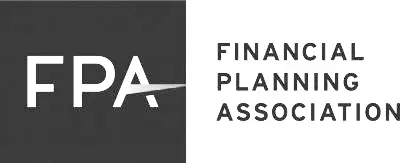Open enrollment presents a great opportunity to review your current financial situation and determine if there are any areas of your financial life that can be optimized through the benefits your employer offers.
From health insurance to ESPP plans. The benefits your employer offers is part of your overall compensation package.
Are you taking full advantage of all that’s offered?
Download a PDF checklist version of this article here.
Here are 10 Steps to help assure you are getting the most out of your Open Enrollment period.
Know the Enrollment Deadline
Start early to give yourself the time needed to carefully review the options and select the benefits that most appropriately fit your situation.
Review Life Changes that May Have Occurred Over the Past Year
Open enrollment is a great opportunity to take inventory of all the life changes that occurred in the last year. Often these can be emotional times, so checking off administrative related tasks to the event takes a back seat.
- Arrival of a new child or preparing for the arrival
- Marriage/divorce
- Changes to your or your spouse/child’s health
- Significant change in salary
- Death of spouse or dependent
Which Health Insurance Plan is Best for Me?
Review your healthcare spending over the past year and estimate what you expect over the coming year. Have your healthcare needs changed over the past year? If so, compare the other plans offered to verify your current coverage is still appropriate.
- If no personal health changes have occurred:
- Is your current policy still offered?
- Is your primary physician still in network?
- Are the medications you take still covered?
- Have changes occurred to the premium, deductible, copay or out-of-pocket maximum?
- If you expect healthcare costs to increase in the coming year:
- Explore policies with lower deductibles and out-of-pocket maximums.
- Verify your primary physician is in network.
- Verify your medications are covered.
- Does the plan cover preexisting conditions?
- Is there spousal or child/dependent coverage?
- Compare policy terms and costs with your spouse to determine the best coverage option for you and your family.
- Is there a vision plan, and is it worth the cost?
- Is there a dental plan, and is it worth the cost?
Does your employer not/no longer offer health insurance? Review health.gov for ACA policies.
Should you choose a Flex Spending Accounts (FSA) and Health Savings Accounts (HSA)?
- Do you have access to a Healthcare FSA? Contributions are made pretax and can be used for dental, vision and healthcare costs. Remember, however, that funds must be used by year end or they will be lost.
- Do you have access to a Dependent Care FSA? Contributions are made pretax and can be used to cover the cost of childcare, up to $5,000 per year.
- Is your healthcare plan Health Savings Account (HSA) eligible?
- Does your employer contribute to the account?
- Know the contribution limits: For 2020, the limit is $3,550 for self-only coverage and $7,100 for a family.
- Does the HSA allow you to invest a portion of the account balance?
Life Insurance
Have you considered if you have a need for life insurance?
- If so, does your employer offer a group policy at no or a reduced cost?
- Do they offer access to supplemental coverage? (For example, 2 or 3x salary)
- Do they offer coverage for your spouse? If so, is it at a lower cost than going directly through an insurance provider?
Disability Insurance
Have you considered if you have a need for disability insurance?
- If so, do they offer short-term disability?
- Do they offer long-term disability?
401k and Workplace Retirement Plans
When it comes to 401k accounts, people always wonder if they are saving enough? We wrote a post that addresses this question: Are you on the right track with your workplace retirement plan? Additionally, we’ve included a few questions to think through when choosing your reviewing your benefits during open enrollment.
- Does your 401k offer a Roth option? What about an After-tax option?
- Does your employer make contributions to your plan or offer a matching contribution?
- Have they made any changes to the amount they contribute?
- Know the contribution limits: currently the limit is $19,500, with an additional catch up contribution of $6,500 for those ages 50 and older.
Review Beneficiaries
Often, beneficiaries on retirement accounts are overlooked. Ask these questions to select the best choices.
- Have you designated your primary beneficiary on all retirement, life and disability policies? Typically, this would be your spouse.
- Have you designated contingent beneficiaries on all accounts and insurance policies? Is the beneficiary a minor? If so, do you have a testamentary trust set up in your estate plan?
Explore Other Benefits Your Employer Offers
Benefits vary widely from employer to employer. So you’ll want to review your options closely to determine which offerings could benefit you most. Below are a few of the options your employer may offer:
- Employee Stock Purchase Plan (ESPP)
- Tuition assistance/reimbursement
- Student loan repayment
- Estate document preparation
- Wealth management fee reimbursement
Comprehensive Review
If you have further questions, consider having a Fee-Only financial advisor conduct a comprehensive review of your financial situation to determine if there are additional opportunities to maximize your employee benefits.





